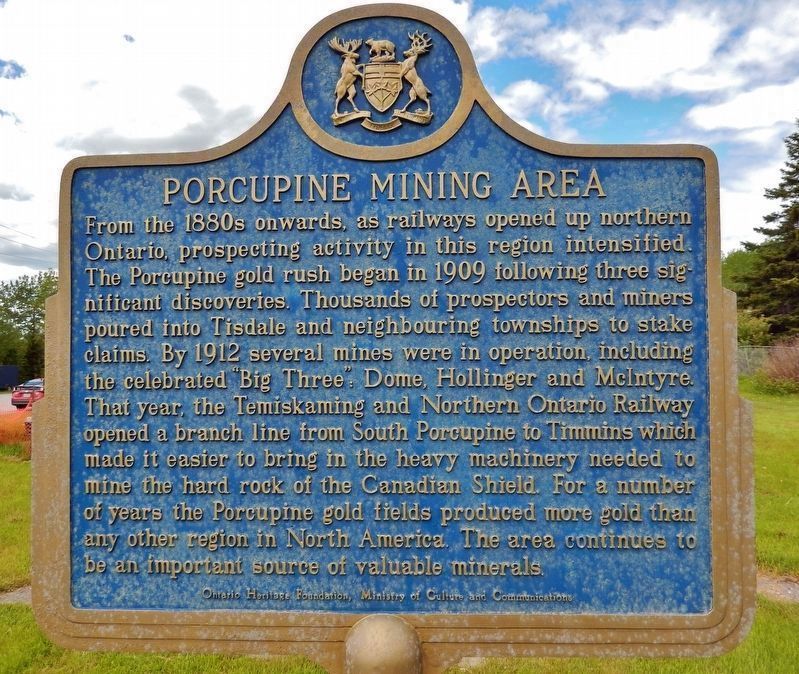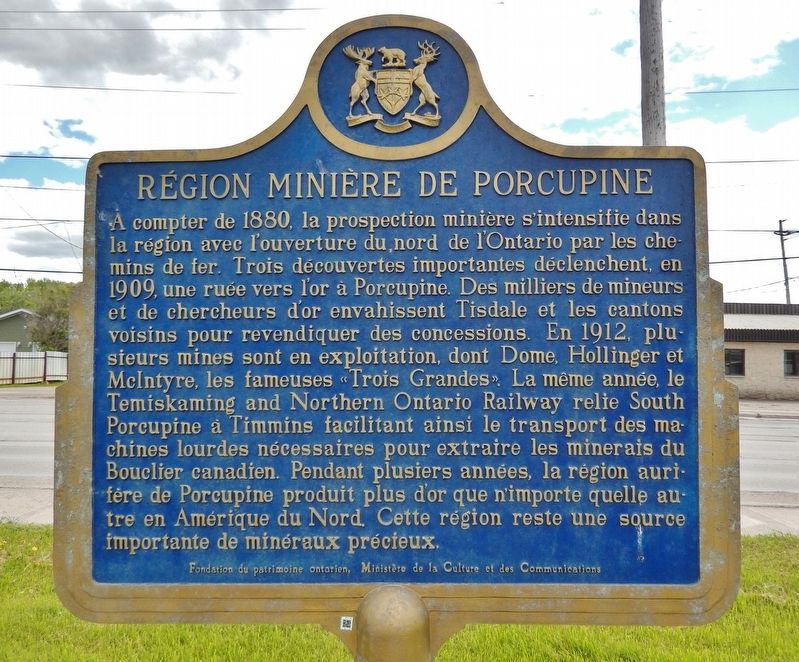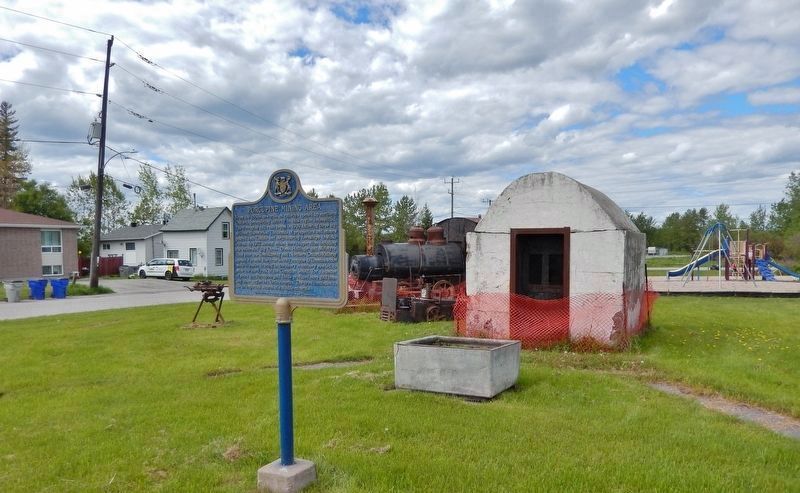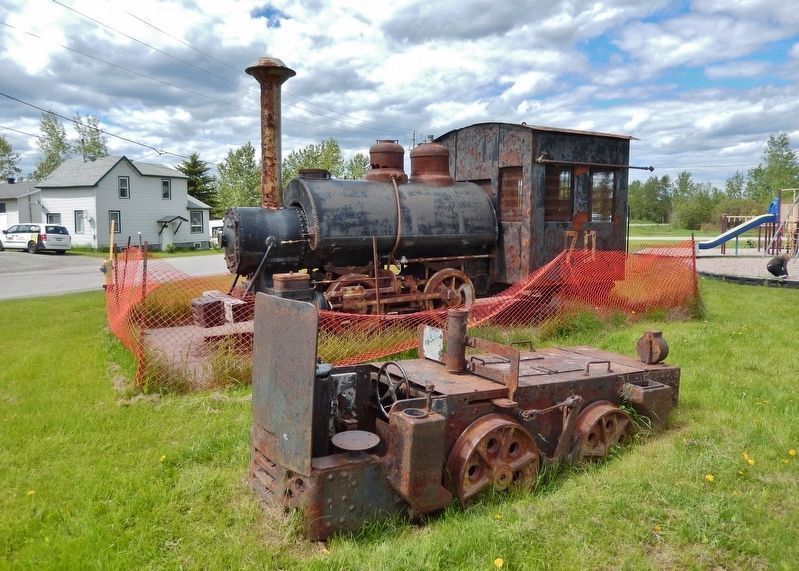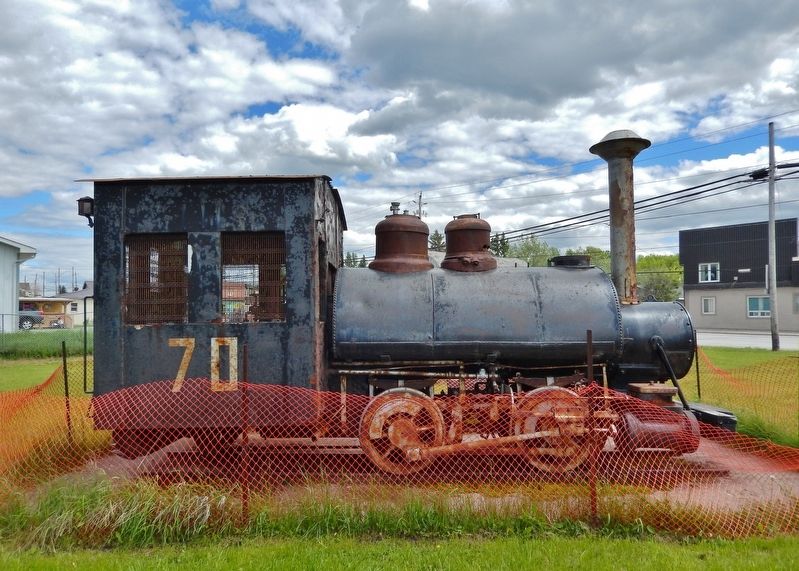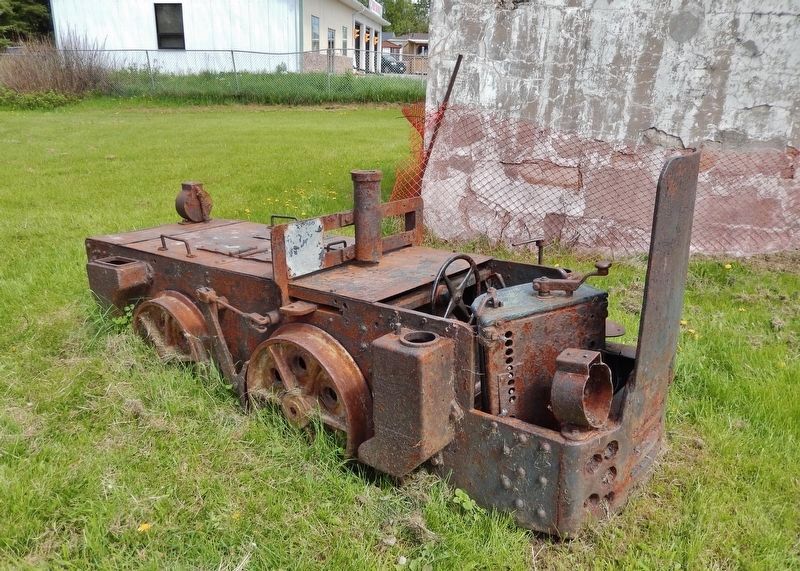Porcupine in Cochrane District, Ontario — Central Canada (North America)
Porcupine Mining Area / Région minière de Porcupine
À compter de 1880, la prospection minière s'intensifie dans la région avec l'ouverture du nord de l'Ontario par les chemins de fer. Trois découvertes importantes déclenchent, en 1909, une ruée vers l'or à Porcupine. Des milliers de mineurs et de chercheurs d’or envahissent Tisdale et les cantons voisins pour revendiquer des concessions. En 1912, plusieurs mines sont en exploitation, dont Dome, Hollinger et McIntyre, les fameuses « Trois Grandes ». La même année, le Temiskaming and Northern Ontario Railway relie South Porcupine à Timmins facilitant ainsi le transport des machines lourdes nécessaires pour extraire les minerais du Bouclier canadien. Pendant plusieurs années, la région aurifère de Porcupine produit plus d'or que n’importe quelle autre en Amérique du Nord. Cette région reste une source importante de minéraux précieux.
Erected by Ontario Heritage Foundation / Fondation du patrimoine ontarien.
Topics and series. This historical marker is listed in these topic lists: Industry & Commerce • Railroads & Streetcars • Settlements & Settlers. In addition, it is included in the Canada, Ontario Heritage Foundation series list. A significant historical year for this entry is 1909.
Location. 48° 29.654′ N, 81° 10.31′ W. Marker is in Porcupine, Ontario, in Cochrane District. Marker is at the intersection of King Street (Provincial Highway 101) and Bellemare Street, on the right when traveling west on King Street. Marker is located in small park at the northeast corner of the intersection. Touch for map. Marker is in this post office area: Porcupine ON P0N 1C0, Canada. Touch for directions.
Other nearby markers. At least 8 other markers are within 13 kilometers of this marker, measured as the
crow flies. The Porcupine Fire / L'incendie de Porcupine (approx. 2.9 kilometers away); The Gold Seekers / Les chercheurs d'or (approx. 3.3 kilometers away); Tisdale Township Municipal Building (approx. 3.3 kilometers away); Ore From the Kidd Creek Mine (approx. 9.5 kilometers away); "The Big Three" / Les trois principales mines (approx. 11.1 kilometers away); Gold Mining in Canada / Production de l'or au Canada (approx. 11.6 kilometers away); Shania Twain (approx. 11.7 kilometers away); The Porcupine Gold Rush / La Ruée vers l'or de Porcupine (approx. 12.8 kilometers away).
Also see . . . Porcupine Gold Rush. Wikipedia entry:
A gold rush that took place in Northern Ontario starting in 1909 and developing fully by 1911. Although a number of prospectors made their fortune, operations in the area are marked largely by the development of larger mining companies, and most people involved in the mining operations were their employees. The mines peaked between the 1940s and the 1950s but still continue to produce gold although the many smaller mines have been consolidated into a small number of larger holdings. By 2001, 67 million troy ounces of gold have been mined from the Porcupine area, making it by far the largest gold rush in terms of actual gold produced. For comparison, the well-known Klondike Gold Rush produced about 12 million troy ounces.(Submitted on March 11, 2023, by Cosmos Mariner of Cape Canaveral, Florida.)
Credits. This page was last revised on July 4, 2023. It was originally submitted on March 10, 2023, by Cosmos Mariner of Cape Canaveral, Florida. This page has been viewed 69 times since then and 25 times this year. Photos: 1, 2, 3, 4, 5, 6. submitted on March 11, 2023, by Cosmos Mariner of Cape Canaveral, Florida.
